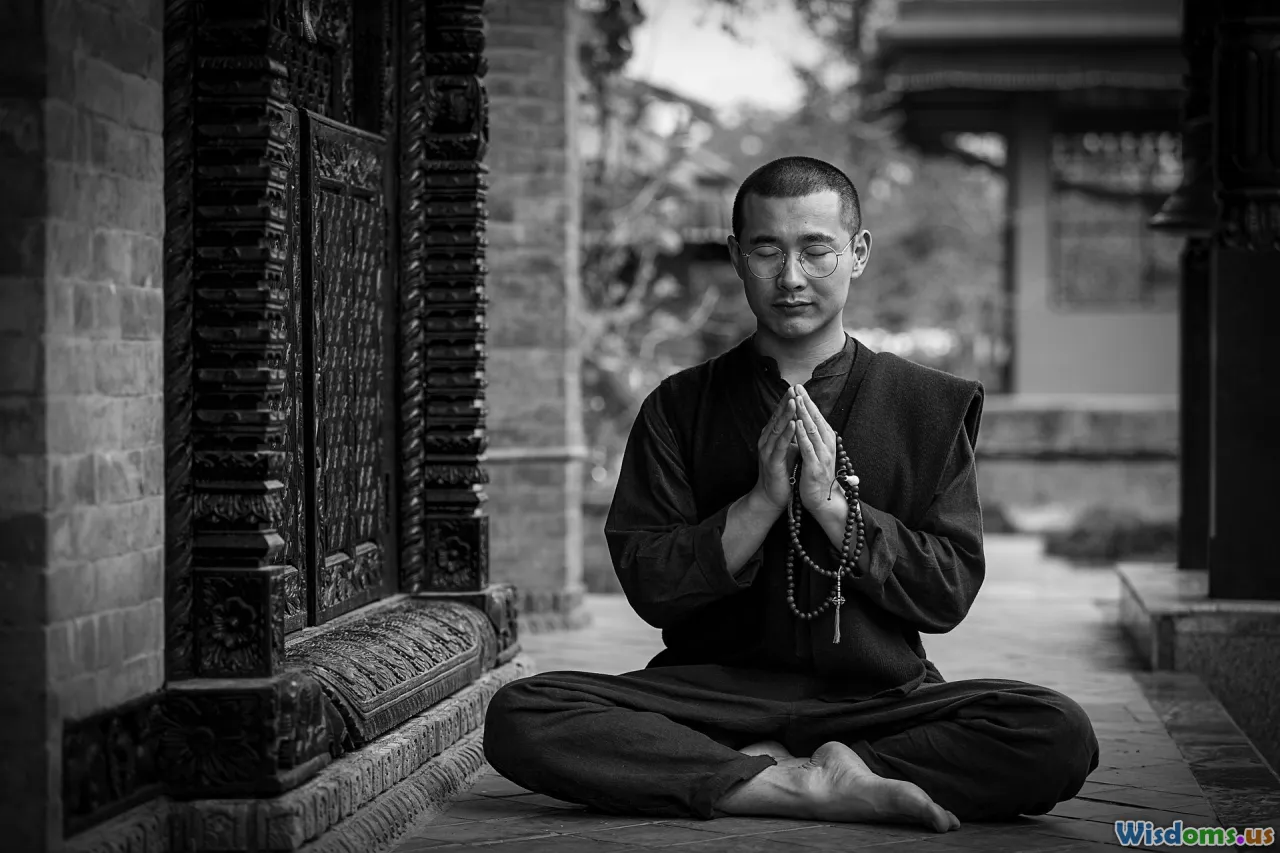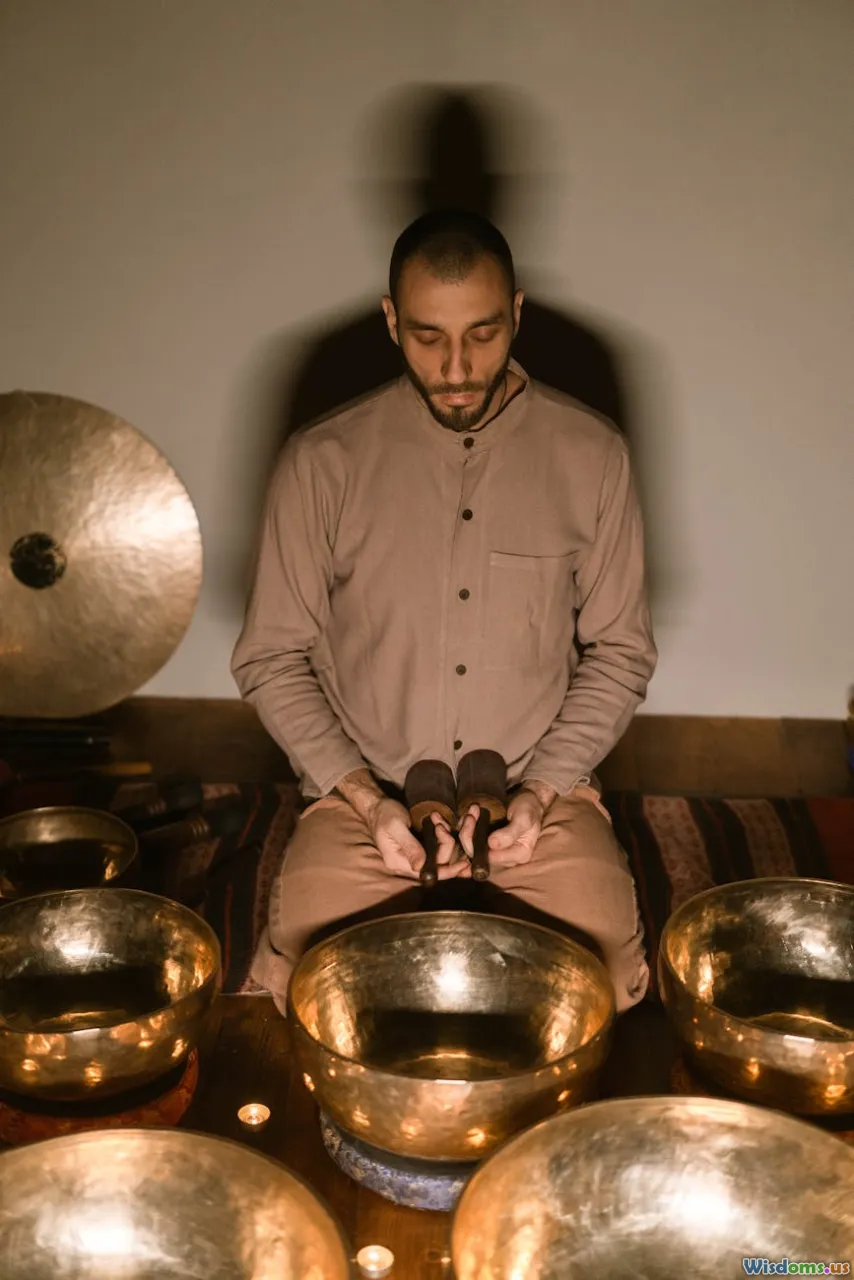
Guided Meditation vs Traditional Prayer Which Works Better
16 min read Explore the effectiveness of guided meditation versus traditional prayer for mental well-being and spiritual growth. (0 Reviews)
Guided Meditation vs Traditional Prayer: Which Works Better?
Pause and inhale deeply for a moment. In our modern, fast-paced lives, more people are seeking solace, clarity, and healing in practices that invite mindfulness or spirituality. Guided meditation and traditional prayer often surface as powerful tools for inner transformation. But which approach should you embrace? Let’s take a comprehensive journey through the advantages, nuances, and unique benefits of each—illuminating what truly works best for your mind, body, and soul.
Understanding the Core: What Are Guided Meditation and Traditional Prayer?

Before making any comparison, it's crucial to clearly define these two practices.
Guided Meditation involves a facilitator—usually through audio or video recordings—leading individuals through steps to achieve relaxation, insight, or heightened presence. These sessions may focus on breathing, visualization, progressive muscle relaxation, or cultivating feelings like compassion. Guided meditations often draw from secular mindfulness traditions or classical philosophies, such as Buddhism or modern psychology.
Traditional Prayer typically refers to personalized or scripted communication with a higher power, deity, or spiritual presence. Rooted in religious customs—like Christianity, Islam, Judaism, Hinduism, Buddhism, and many more—prayer can be silent, spoken, or sung. While the intention often revolves around seeking help, expressing gratitude, or confessing, prayer can also be meditative or repetitive, depending on the culture.
Real-World Example: The Modern Seeker
Consider Maria, a tech executive burdened by stress. She tries both attending Catholic Mass (praying silently during the rituals) and using a meditation app with soothing, guided content. Both practices offer pockets of peace—but how do their mechanisms and impacts differ?
The Psychological Benefits: Mind, Mood, and Motivation

Guided Meditation: Evidence for Brain and Emotional Balance
Modern neuroscience has scrutinized meditation extensively. In 2011, Harvard researchers published findings in Psychiatry Research: Neuroimaging demonstrating that eight weeks of mindfulness meditation increased gray matter density in areas connected to learning, emotional regulation, and self-awareness. Guided meditation, with its gentle instructions, is often ideal for beginners and those prone to wandering thoughts.
The tangible effects:
- Reduced Anxiety: Studies show that guided mindfulness meditation can lower anxiety levels, sometimes as effectively as medications for generalized anxiety disorder.
- Improved Focus: Structured meditation tightens attention spans. According to a 2018 review in JAMA Internal Medicine, even short, consistent meditation sessions can sharpen attention.
- Emotional Regulation: Meditative narratives often encourage observing thoughts with detachment, helping users de-escalate anger, sadness, and fear.
Anecdotally, guided meditation apps like Headspace or Calm report millions of downloads, underscoring the practice’s global relevance.
Traditional Prayer: The Power of Faith and Connection
While scientific studies on prayer can be complex due to varying definitions and subjective reporting, prayer is consistently linked with positive psychological outcomes, particularly for those who approach it with genuine intention.
Major benefits include:
- Resilience to Stress: Prayer is correlated with hopeful outlooks, subjective wellbeing, and improved stress management, as noted in a 2015 analysis by The Journal of Behavioral Medicine.
- Enhanced Purpose and Hopefulness: Personal or communal prayer can foster a sense of coherent meaning during turmoil, illness, or grieving processes.
- Community and Support: Many religious prayers are performed openly, nurturing bonds and boosting morale through shared rituals.
Example: During the COVID-19 pandemic, online prayer groups flourished, proving a spiritual lifeline and boosting mental health across isolated populations.
Biological and Physical Effects

Guided Meditation: Science-Backed Physical Changes
Physiologically, meditation triggers the body’s relaxation response—a discovery credited to Dr. Herbert Benson in the 1970s. Key health impacts include:
- Lowered Blood Pressure: Deep breathing and mental calm help dilate blood vessels and decrease heart rate.
- Pain Management: Mindful guided meditations are used in clinics to complement chronic pain treatment, as seen in Jon Kabat-Zinn’s Mindfulness-Based Stress Reduction (MBSR).
- Improved Sleep: A survey from the National Sleep Foundation in 2021 reports that individuals meditating before sleep experience fewer disturbances.
Prayer: Beyond the Nervous System
Traditional prayer engages the parasympathetic nervous system if performed in a calm, contemplative manner. But it offers additional physical-religious intersections:
- Routine and Structure: Regular prayer (e.g., daily, morning, and evening prayers) can enhance circadian rhythms. Muslims, for instance, perform prayers at set times, structuring the day and enhancing psychological stability.
- Physical Movement: Ritual prayers (Salah in Islam or Buddhist prostrations) integrate movement, offering gentle exercise akin to yoga.
- Health Outcomes in the Faithful: A massive 2016 Harvard study of over 74,000 women found a correlation between regular religious service attendance (and by extension, communal prayer involvement) and longevity, though the reasons are likely multifaceted—spiritual, social, and psychological.
Structure and Accessibility for Modern Life

Guided Meditation: Tailored and Tech-Savvy
- On-Demand Access: Meditation apps, YouTube channels, and online courses mean anyone, anywhere can meditate at a moment’s notice.
- Customization: Whether it’s 2 minutes of breath focus or a 60-minute visualization journey, guided meditations adapt to your needs, interests, or schedules.
- Secular or Spiritual: Some people enjoy meditating purely for focus, while others integrate spiritual beliefs—making the practice flexible across worldviews.
How-to Example: For stressed professionals, setting a recurring 5-minute post-lunch guided meditation via an app or podcast seamlessly fosters a new habit without conflicting with work demands.
Prayer: Tradition Meets Daily Continuity
- Portability: Silent prayers can be made anywhere—while walking, commuting, or working. Formal prayers, like rosaries or dhikr, also allow fluid incorporation into routines.
- Structured Ritual: Formalized prayers provide rhythm, anchoring believers throughout life’s unpredictability. For many, such as Orthodox Jews or Catholic nuns, prescribed daily prayers carve out meaningful anchors in chaotic lifestyles.
- Sacred Space: Prayer may also invite the use of tangible sacred spaces—home altars, churches, mosques, or temples—that reinforce intention and carve out psychological sanctuaries.
Secular vs Spiritual Outcomes: Meeting Unique Needs

Guided Meditation: Embracing Modern, Secular Wellness
Individuals seeking emotional health without religious framing gravitate towards guided meditation. Secular mindfulness strips away metaphysical language, focusing on present-moment awareness, often coupled with cognitive-behavioral therapy (CBT) insights. Programs in public schools, hospitals, or corporations champion inclusivity by basing meditative sessions on universal human experiences (e.g., stress, empathy).
Case Study: Major corporations like Google have introduced Search Inside Yourself, a workplace mindfulness program with documented improvements in productivity, teamwork, and employee wellbeing—rooted in guided meditation techniques, not spirituality.
Prayer: The Depth of Faith and Transcendence
For the spiritually inclined, prayer meets needs that empirical meditation may not. Faith-based prayers invoke hope, gratitude, forgiveness, or surrender to mystery. They can comfort during despair, facilitate confession, or stimulate awe at life’s mysteries.
Example: After devastation such as natural disasters, survivors reporting greater use of prayer often express resilience rooted in faith—trusting a higher plan, as opposed to taking everything solely upon themselves.
Challenges and Pitfalls: Common Stumbling Blocks

Guided Meditation: Consistency and Depth
- Dependency on Guides: Some people may become reliant on specific instructors or apps, struggling to meditate without external direction.
- Superficial Practice: Without depth or personal engagement, sessions risk losing meaning and becoming routine rather than transformative.
- Anxiety Amplification: For a small minority, introspective meditation can initially worsen anxiety (especially without professional support), leading to discomfort before calm is reached.
Tip: Progress from guided to unguided sessions gradually, and seek community or therapy if unresolved issues arise during meditation.
Prayer: Battle with Distraction and Meaning
- Mind Wandering: Traditional prayers (especially memorized, repeated ones) may degenerate into rote recitation, lacking mindful engagement.
- Doubt and Disconnection: Crises of faith can cause guilt, frustration, or feelings of abandonment during prayer.
- Cultural Barriers: Not everyone is welcome in every tradition, and prayer forms can be exclusive by doctrine or dogma.
Actionable Advice: Combine moments of open, spontaneous prayer with structured prayers. Sharing group prayers, journaling, or seeking spiritual mentorship can rekindle meaning.
Expert and User Perspectives: What People Say

Insights from Mental Health Professionals
- Dr. Judson Brewer, neuroscientist and mindfulness researcher, emphasizes guided meditation’s ability to rewire habitual stress responses through ‘reward-based learning’. He advocates for structured approaches for beginners.
- Rev. Dr. Serene Jones, President of Union Theological Seminary, discusses prayer as a dialogical, relationship-based practice—key for those seeking existential comfort or nurturing faith.
Testimonials from Practitioners
Anne, 42, Guided Meditation Enthusiast: “Meditation gave me concrete skills for when my anxiety spikes; I can breathe and notice thoughts spiral, then come back to the present.”
Jamal, 37, Devoted in Traditional Prayer: “Prayer carves out sacred moments—I talk and I listen. Over decades, I've built an unbreakable faith foundation that grounds me in the storms.”
Hybrid Approaches
Increasingly, people blend both practices regardless of background. A Buddhist Christian might meditate to still the mind, then pray from the heart. Therapists often coach clients to use mindful breathing before embarking on spiritual rituals. Such synergy is celebrated in interfaith and holistic health spaces.
Actionable Strategies: Getting Started and Succeeding

Whether you’re curious about meditation, drawn to prayer, or seeking an integrative approach, here are practical tips for successful implementation:
For Trying Guided Meditation
- Begin with Short Sessions: Start with 5–10 minutes once a day using a free app or YouTube channel. Favorite meditation types: breath awareness, body scans, or loving-kindness.
- Choose the Right Setting: Find a quiet spot. Use headphones for immersive audio and eliminate distractions.
- Track Progress: Keep a simple journal. After each session, note mood, stress, or energy changes. This enhances motivation and adapts the practice to your evolving needs.
For Embracing Traditional Prayer
- Pick a Regular Time: Anchor prayer to a daily routine, such as before breakfast or bedtime. Even short, sincere prayers can foster continuity.
- Mix Scripted and Spontaneous: Most traditions encourage both. Blend formal prayers (like the Serenity Prayer or Psalm 23) with open discussions with the divine.
- Seek Community: Engage in communal prayer or join online groups. Shared intentions subtly intensify benefits, foster accountability, and deepen meaning.
For Blending Both
- Start with Silence: A minute or two of meditation calms mental noise, priming the heart for focused prayer.
- Alternate Weekly: Try three days of meditation, then three days prioritizing prayer, recording your experiences.
- Consult Trusted Mentors: Faith leaders, meditation instructors, or spiritual advisors can tailor approaches to your personality, questions, and needs.
So—Which Works "Better"?

The answer is personal—and perhaps that's part of the beauty. Guided meditation excels in secular, skill-based mental training and emotional regulation: ideal for those wanting evidence-backed techniques to handle the mind and its stressors. Traditional prayer offers unique comfort, structure, and existential meaning for those with a spiritual orientation; it provides hope and connectedness, during times of joy or hardship, transcending what mindfulness alone can offer.
Many find combining both offers double the rewards. What matters most is intention, regularity, and authenticity in whichever practice you choose. As societies blend ancient and modern, secular and sacred, we each hold the agency to shape our inner landscape—one mindful breath, or one whispered prayer, at a time.
Rate the Post
User Reviews
Popular Posts















